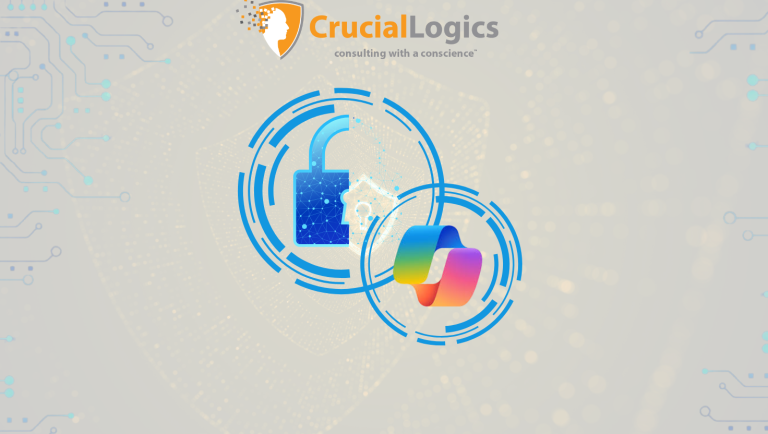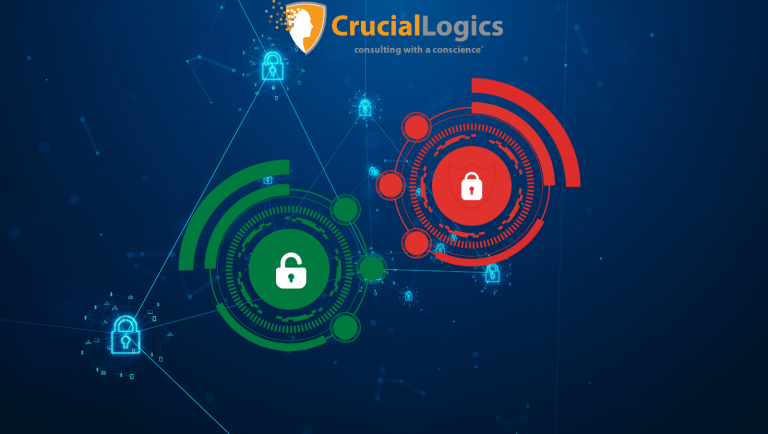The Microsoft 365 ecosystem is, by design, composed of a suite of closely knit apps that bundle all productivity tools under a single umbrella. As Microsoft 365 Copilot continues to be integrated into most organizational workflows, blending large language model (LLM) data with your organization’s data is a powerful productivity assistant.
Copilot has evolved into an intelligent assistant that helps to increase productivity for over 70% of Microsoft 365 users, reducing email processing time and significantly accelerating brainstorming. Data flowing within Microsoft 365 leads to enhanced productivity through improved information discovery, while simultaneously compromising information confidentiality. Copilot sifts through your organizational data and might access or display unauthorized data. This is why the traditional approach to maintaining data security doesn’t suffice.
To keep your environment secure and compliant, you need to get data governance right. This blog breaks down the key principles of effective data governance and how we can help you put them into action.
Principles of Effective Governance
Today, over 60% of organizations manage at least one petabyte of data, while some organizations manage more than 500 times that amount. This information, which exists in multiple forms, is often proprietary, blending customer and organizational data in multiple formats.
Before Copilot, it was typical to manually sift through different repositories in search of a specific piece of information; however, Copilot transformed that manual search into a microsecond activity, powered by a simple prompt.
Consider an open SharePoint repository containing sensitive customer information such as health records, insurance details or HR and payroll data. Without proper governance, a third-party user could inadvertently access data through willful exposition, malicious neglect or accidental access.
Regardless of the industry vertical, access to sensitive customer and company information could warrant hefty fines.
Rather than exclusively applying data governance to Copilot, governance must be applied across Microsoft 365 as a whole.
1) Restricting Shadow AI Usage
Shadow AI is an unauthorized model that operates outside the established boundaries of what has been deemed legitimate for use within the organization.
Microsoft Copilot can operate within a ‘sealed box.’ This means that any prompt fed into it does not train the LLM but mostly interacts with organizational data to accelerate information discovery and improve collaboration.
The widespread adoption of AI across organizations has transformed it into data-hungry machines that utilize every prompt to train their large language models (LLMs). Recent data leaks, including the DeepSeek case where over 1 million user records were exposed and an accidental leak of sensitive internal source code by an engineer who uploaded Samsung code to ChatGPT, demonstrate just how insecure third-party large language models (LLMs) can be. As such, there is a need to enforce policies that restrict the use of shadow AI within the organization.
2) Tenant Hardening as the Foundation
Your Microsoft 365 tenant is often the path of least resistance. Instead of trying to breach hardened servers or endpoints, bad actors will probe your tenant for weak identity controls, overly permissive defaults, and misconfigurations.
Tenant hardening is about reducing that exposure. It is a continuous process of tightening configurations, aligning with Microsoft’s latest security baselines, and making sure access is intentional and monitored.
At a minimum, this means:
- Keeping a tight lid on who has privileged access
- Reviewing who can register apps and access admin portals
- Enforcing strong authentication across the board
- Monitoring for changes that could introduce risk
3) Endpoint Security
All mobile devices, laptops, desktops and servers should be encrypted and up to date with the latest patches to remain secure. Weak endpoint configurations that lack Microsoft security baseline policies create openings that hackers can manipulate.
Endpoint security involves securing devices through a modular approach that forms a cohesive security strategy. Windows 11 and, to some extent, Windows 10 incorporate endpoint security measures natively, hence reducing the need for third-party applications. You can also secure your data by enabling automatic operating system (OS) updates through Windows Update. Microsoft Endpoint Manager provides you with complete control and visibility into the update progress.
It is also essential to leverage attack surface reduction (ASR), encrypt data, reinforce administrative security, and block malicious online threats through Defender for Endpoint’s web filtering capabilities.
There is a lot more you can do with Microsoft Endpoint Manager. You can use it to:
- Control web traffic.
- Monitor the device’s health status.
- Block access to sanctioned AI devices.
- Integrate with Defender for Cloud Apps.
4) Data Labeling and Classification
Microsoft configured Copilot to respect data labels and data loss prevention (DLP) controls configured within Microsoft 365. That way, users won’t access or modify information they are not supposed to view.
A good practice is to limit your taxonomy to no more than five parent labels, each with up to five sub-labels. Use intuitive, well-understood language to keep classifications clear and actionable. This structure ensures your data labels remain secure and inaccessible by default. Where possible, apply the “Private: no guests” designation unless third-party access is absolutely necessary.
5) Data Loss Prevention (DLP)
Data loss prevention (DLP) policies are designed to minimize the likelihood of a data breach and also define procedures in the event that data is lost. These policies are also helpful in preventing data misuse, especially when interacting with productivity assistants.
The first step is to identify and group sensitive data using the previously mentioned sensitivity labels. By default, Microsoft provides predefined sensitivity labels but you can also group data based on its importance and sensitivity.
Next, create DLP policies that prevent the unauthorized sharing of sensitive data through internal and external communication channels. Microsoft has over 100 types of sensitive information and more than 40 built-in policy templates that comply with conventional industry standards.
Beyond utilizing simple text scans to understand content, DLP policies use deep content analysis to understand context and identify, monitor, and protect sensitive items across Microsoft 365 services.
Content is analyzed for primary data matches to keywords through the evaluation of regular expressions, internal function validation, and secondary data in proximity to the primary data.
6) App Visibility and Control
App governance in Defender for Cloud Apps is a set of security policies designed for OAuth-enabled apps registered on Google, Microsoft Entra ID, and Salesforce. They provide visibility and control over how cloud apps operate, as well as how users access and share sensitive data in Microsoft 365 and other cloud platforms.
Here is how Defender for Cloud Apps provides visibility and control:
- Insights: They provide a clear view of all non-Microsoft apps registered to Microsoft Entra ID and Google within your organization on a single dashboard. This includes monitoring the status of apps and their activities, as well as how to respond to them accordingly.
- Governance: Develop policies for cloud applications and user behaviour, and protect users from malicious applications. This limits the access of risky apps to your systems.
- Remediation: In addition to automatic remediation capabilities, Defender for Cloud Apps utilizes remediation controls to respond to anomalous app activity detections.
- Detection: Notify you when anomalies occur, and when non-compliant items are used.
7) User Training & Adoption
To ensure users adopt the new tools, you need a proper process that supports onboarding, training, and ongoing engagement. Effective training equips users with the skills for responsible and secure usage of Microsoft 365 resources. The primary focus should be on the responsible use of AI and Copilot, differentiating between sanctioned and unsanctioned tools, and the type of data to share within Copilot.
Some of the benefits of user training include:
- Enhanced Productivity: It improves efficiency and reduces time spent on tasks.
- Improved Collaboration: Tools such as SharePoint, Teams, and OneDrive facilitate seamless collaboration.
- Increased ROI: Maximizing the use of cloud apps ensures you get the best value from your investment.
- Reduced IT Support Burden: Trained employees require minimal ongoing technical support, allowing IT teams to focus on more important activities.
8) Conditional access policies
The primary function of a Conditional Access policy is to consolidate signals and make informed decisions that enforce organizational policies and security controls. They may be applied to an individual user at any given time.
For example, if a policy requires multifactor authentication, while another requires a compliant device, you must complete both MFA and the compliant device requirement. However, if you have multiple assignments configured, all of them must be satisfied for a policy to be triggered.
All conditional access policies are enforced in two phases:
Phase 1: Collect Details – Gather session details, such as network location and device identity, necessary for policy evaluation.
Phase 2: Enforcement – Use the details gathered in phase 1 to identify all the requirements that were not met.
If you find a policy configured with block grant control, the enforcement process stops, and the user is blocked.
9) Retention policies
Using Microsoft 365 means generating and storing a large amount of data and configurations—documents, emails, spreadsheets, users, policies, and more.
Retention policies determine how long deleted or inactive data remains accessible, even after a subscription ends. Microsoft uses both retention policies and retention labels to manage this across Microsoft 365, including Azure AD, OneDrive, Teams, SharePoint, and Exchange Online.
Retention policies apply broadly, such as at the site level, and can be configured to:
- Keep data indefinitely.
- Delete data after a set time.
- Retain data for a period before deleting.
Retention labels offer more granular control. They’re applied at the item level like individual documents or email folders, allowing different rules for different types of content. For example, one SharePoint document might be kept for 3 years, another for 5.
Conclusion
Microsoft 365 makes it easier than ever to collaborate, share ideas, and access information but it also opens new pathways for data exposure. Without clear policies in place, sensitive data can quickly be exposed. That’s why it’s critical to define and configure access policies that control who can see what.
At CrucialLogics, we help you secure your Microsoft 365 environment using the tools you already have. We do not bundle it up with additional tech stack or add unnecessary complexity. To learn more about Microsoft 365 governance, speak with us today.






